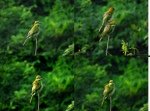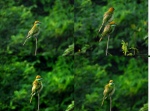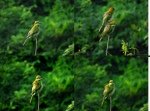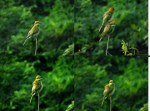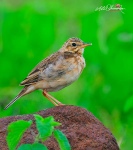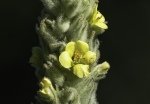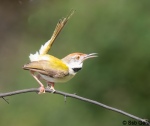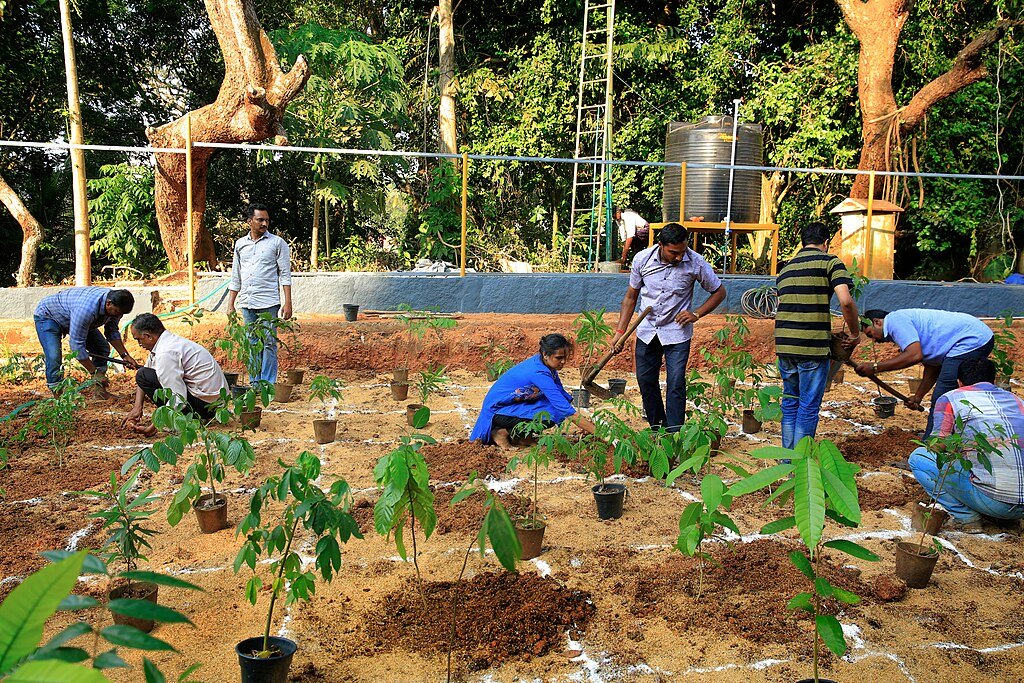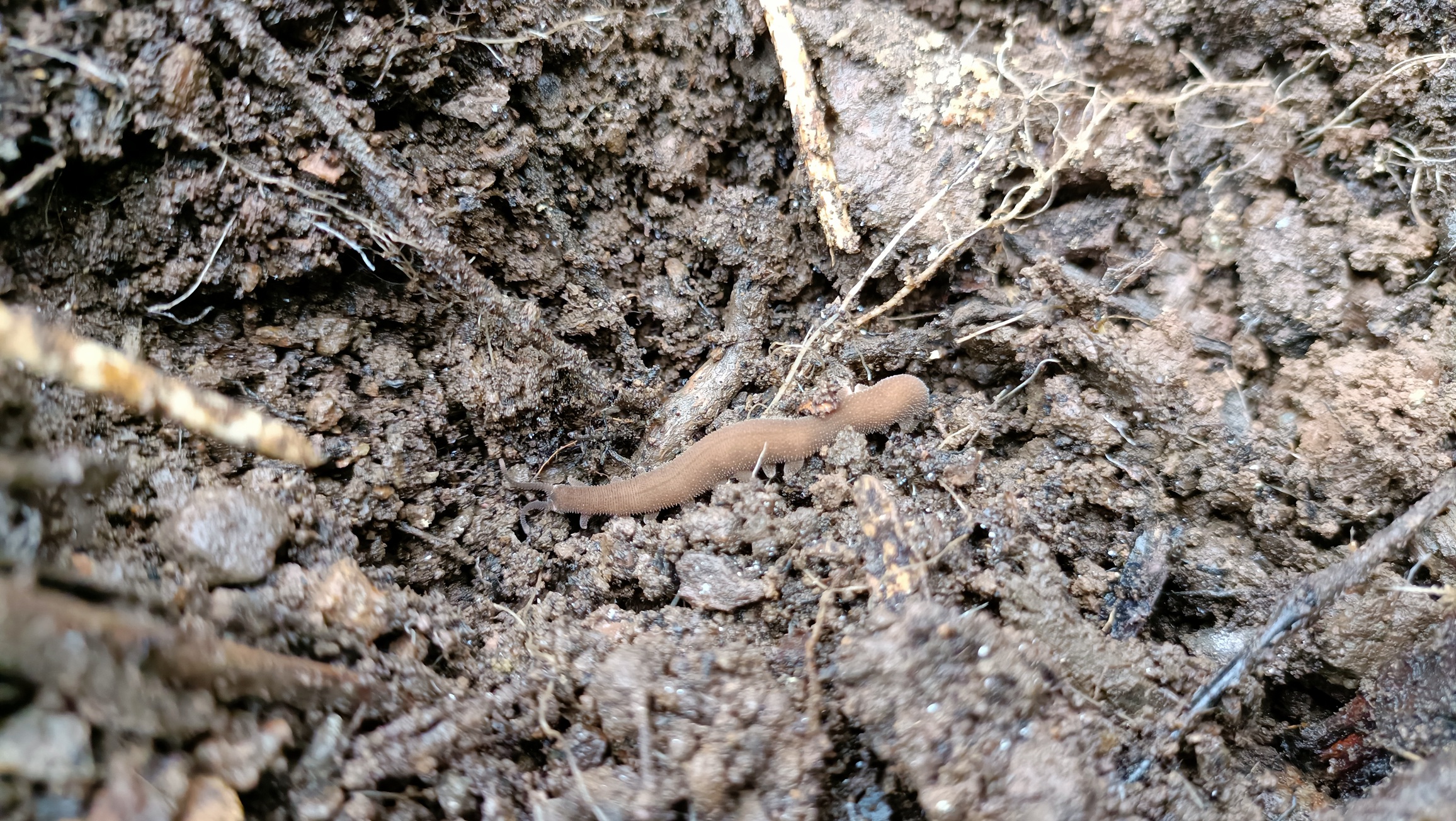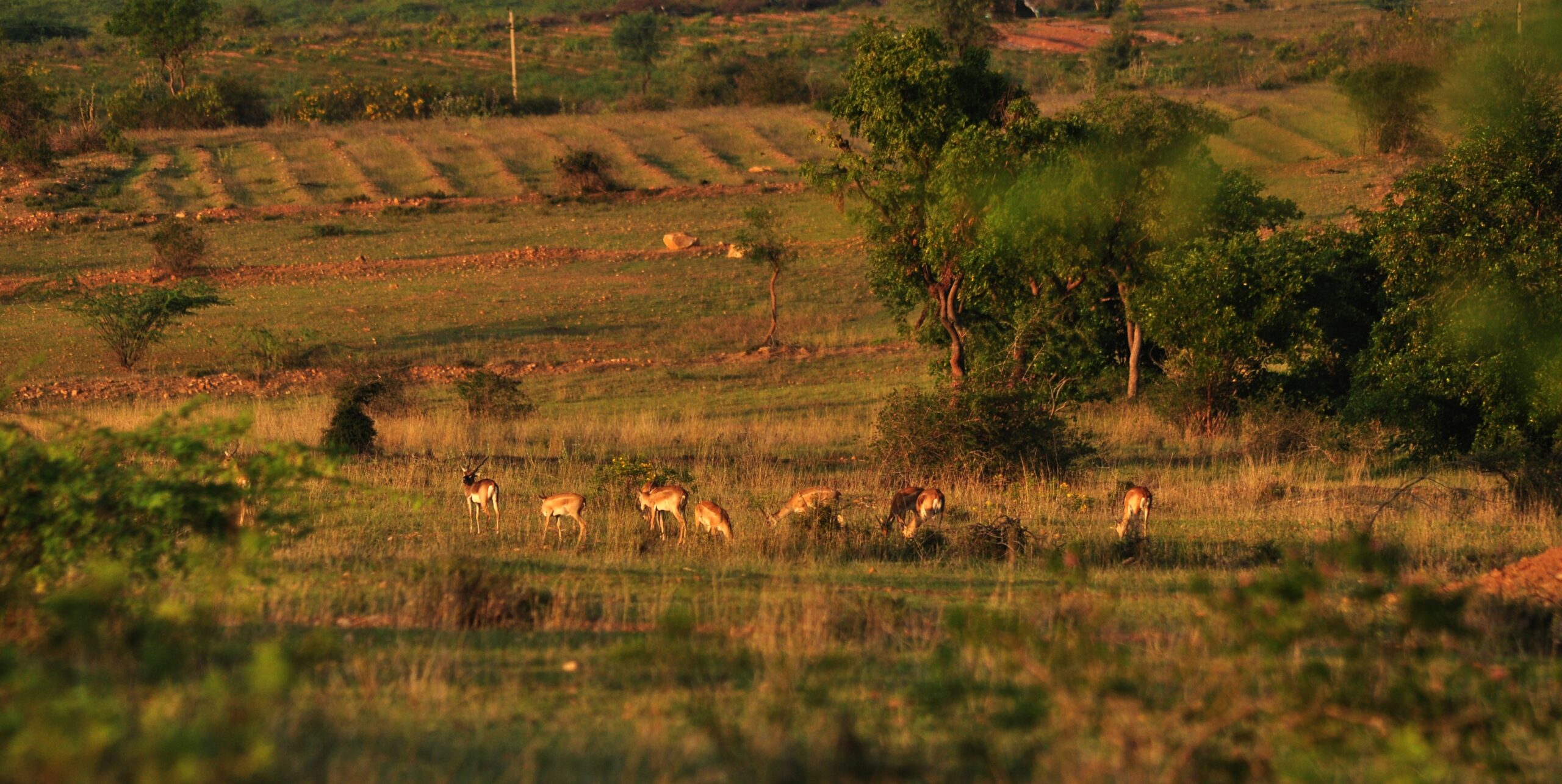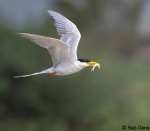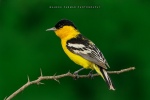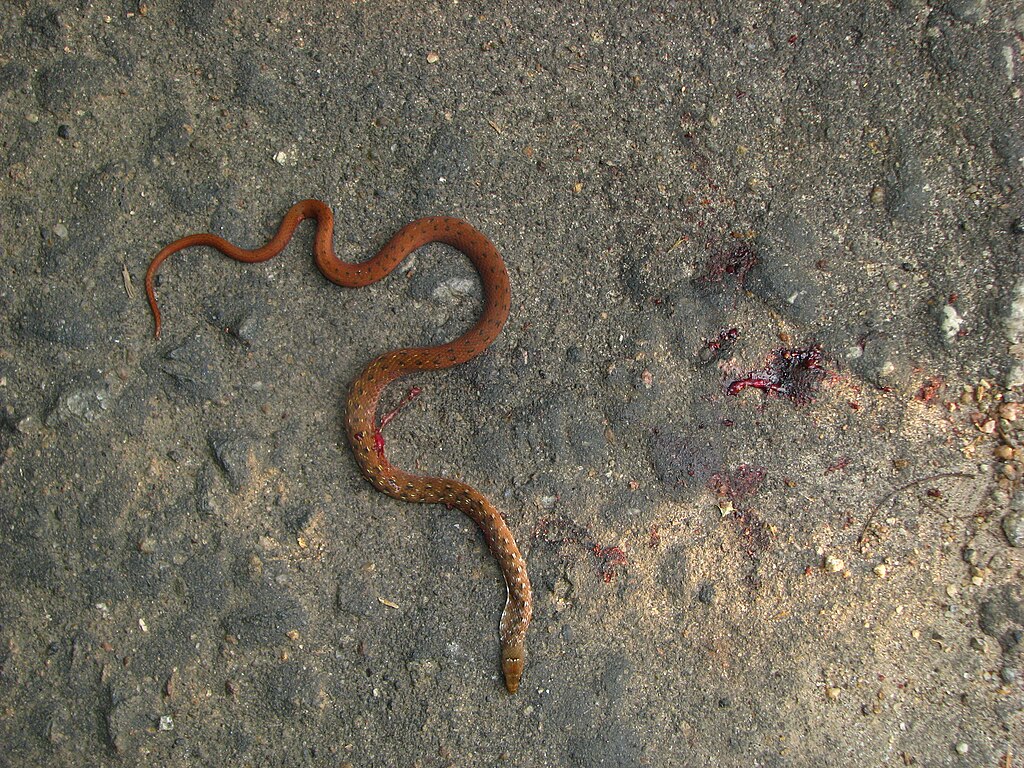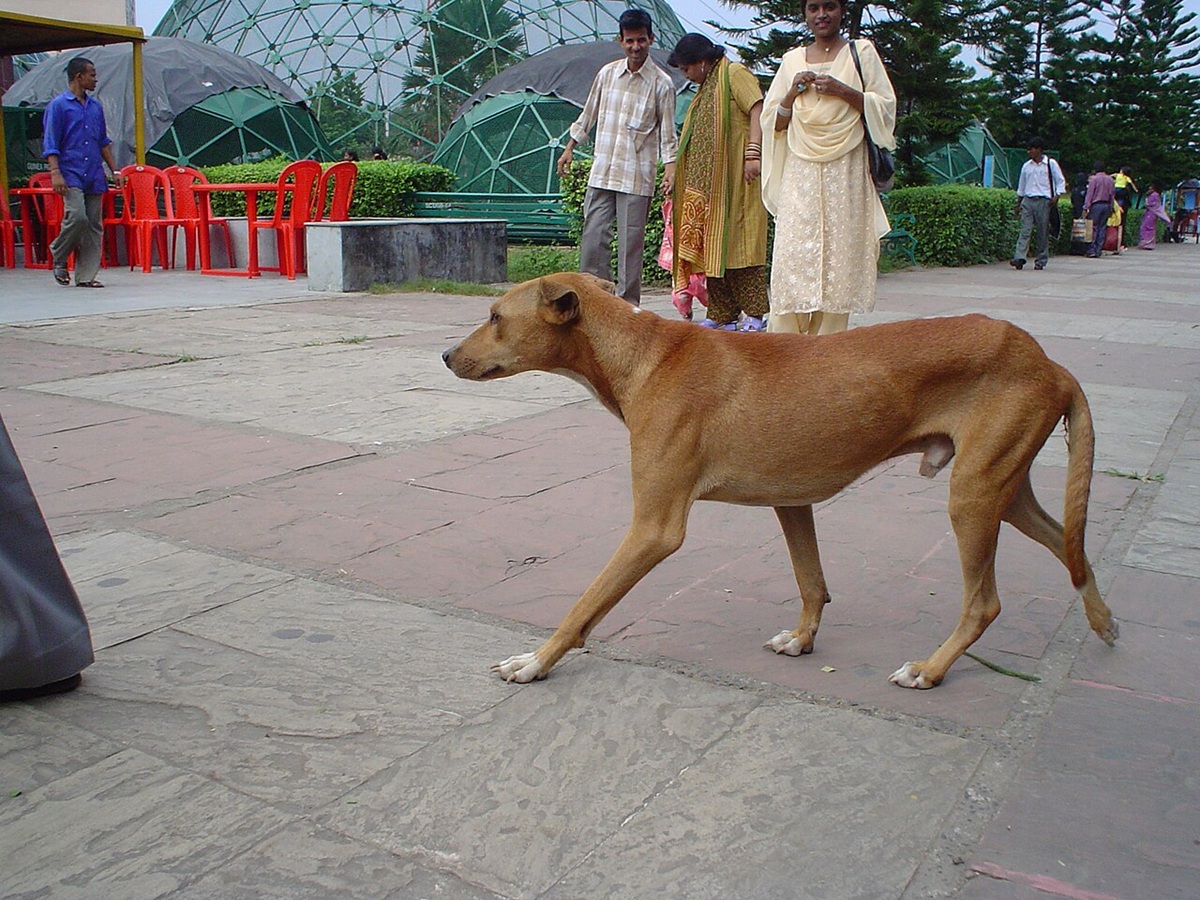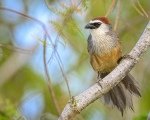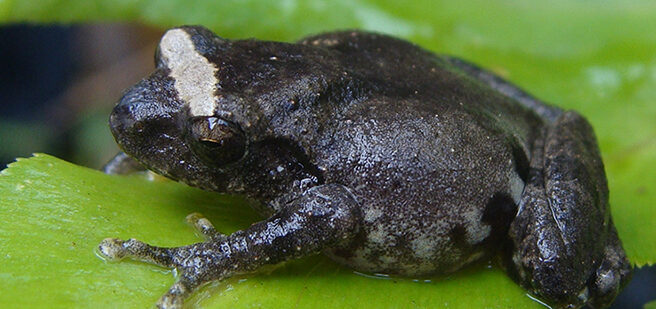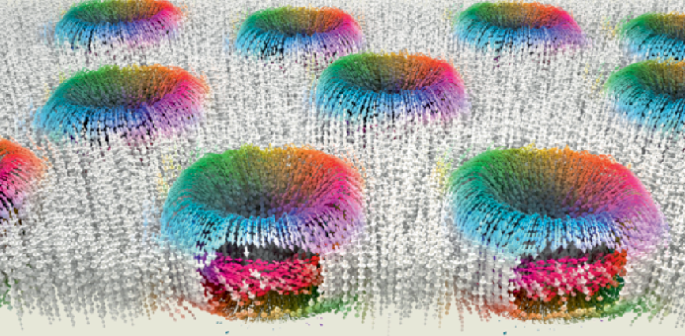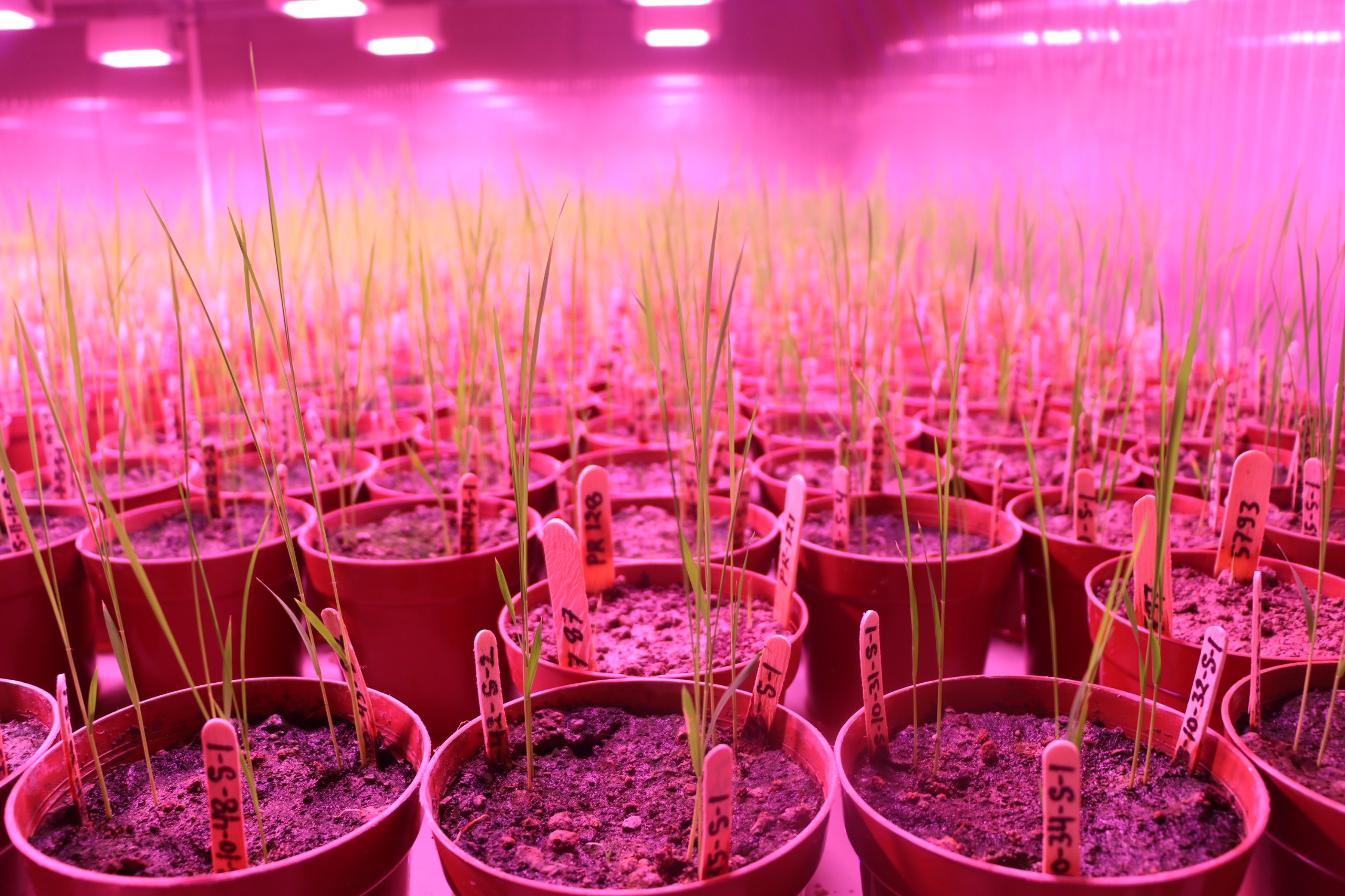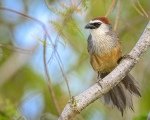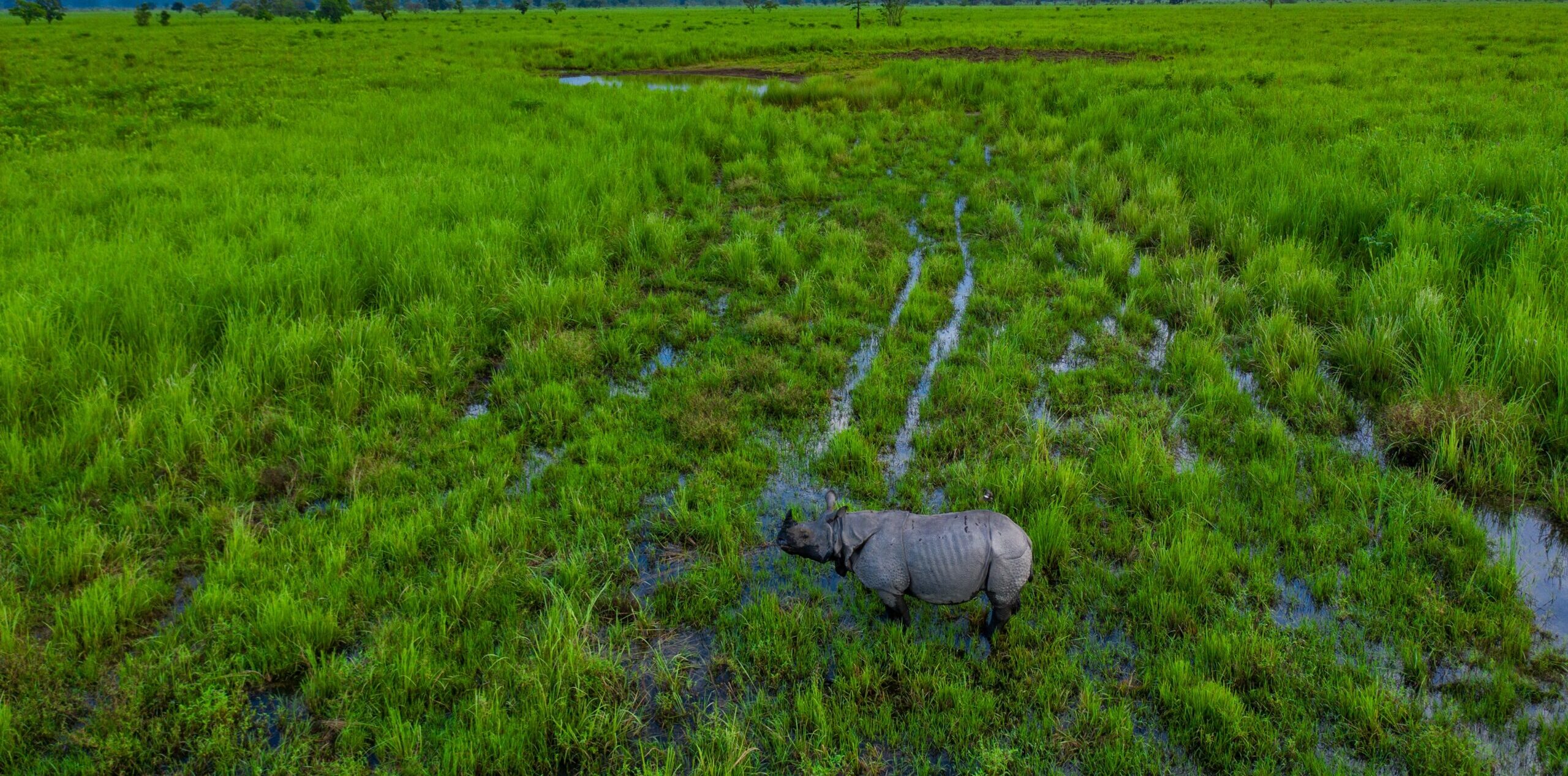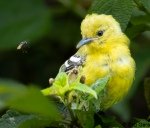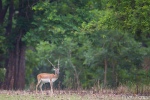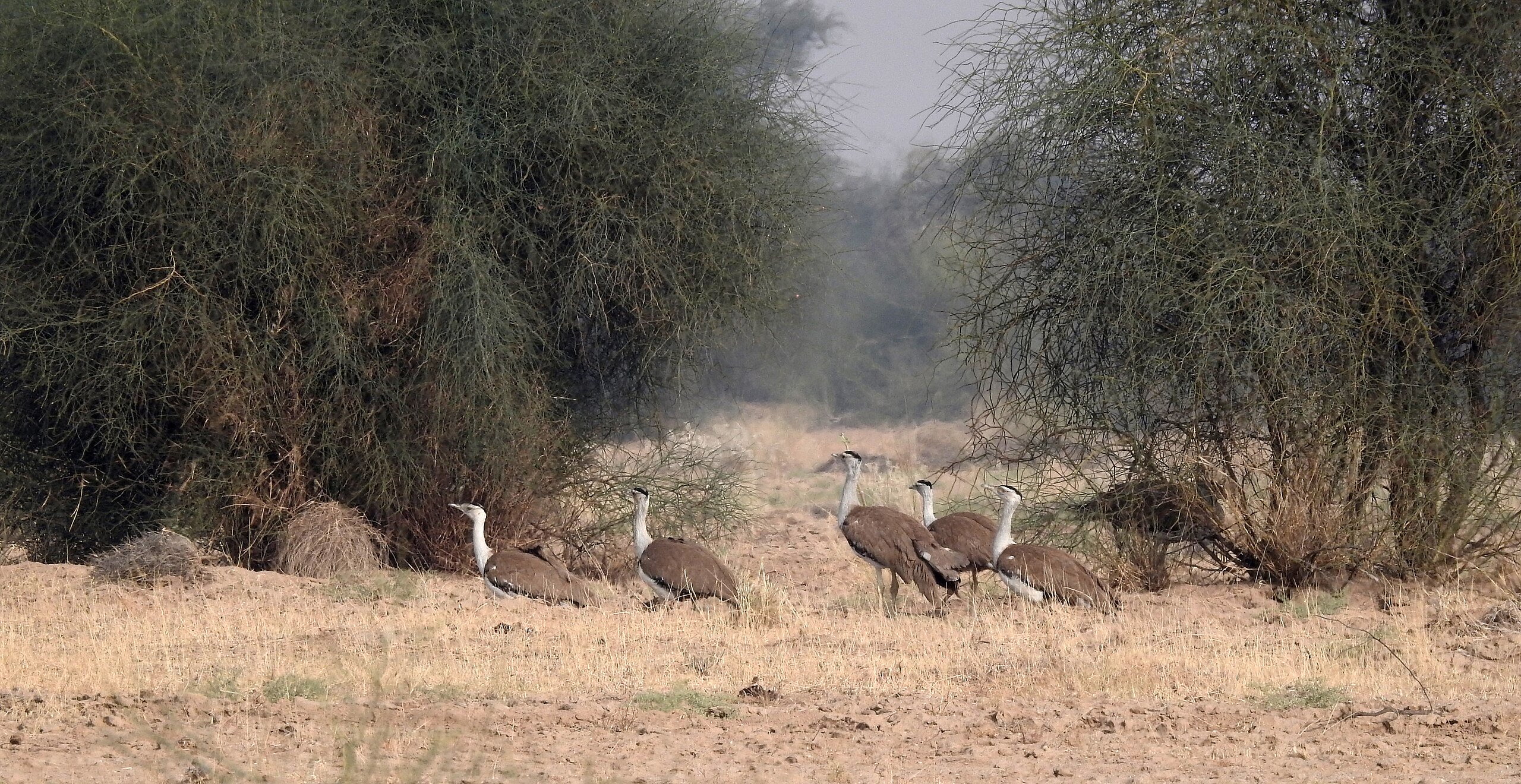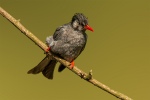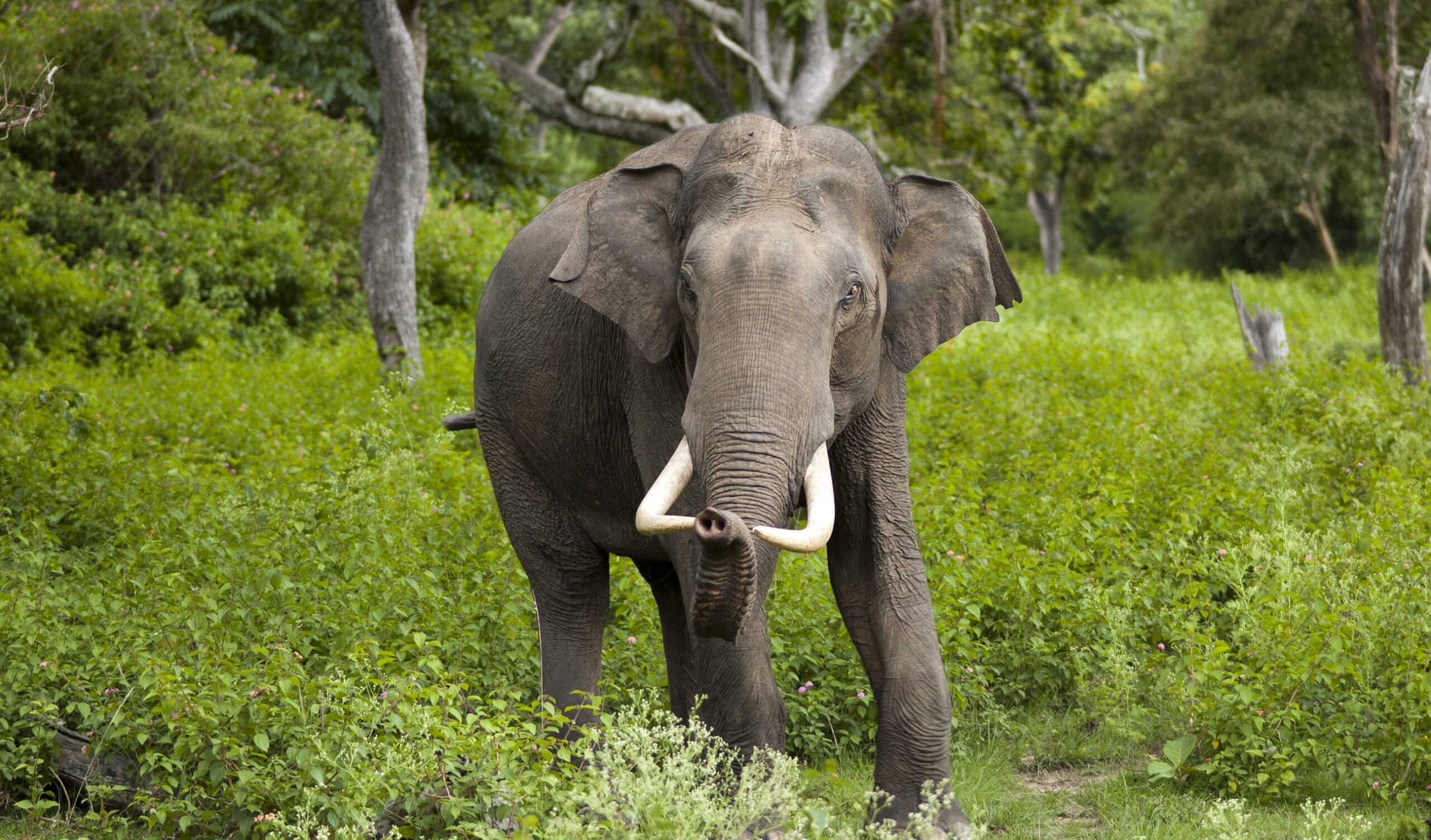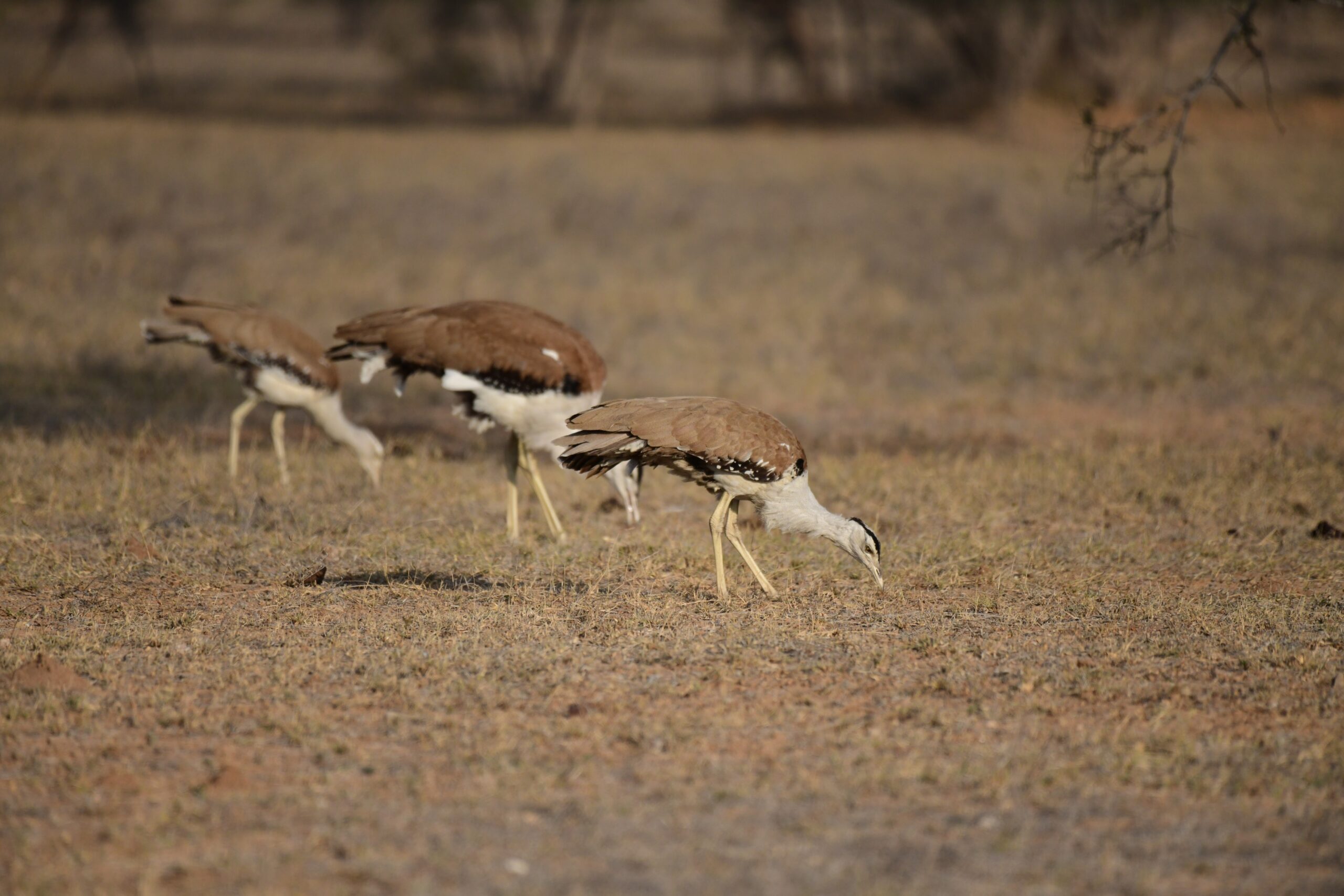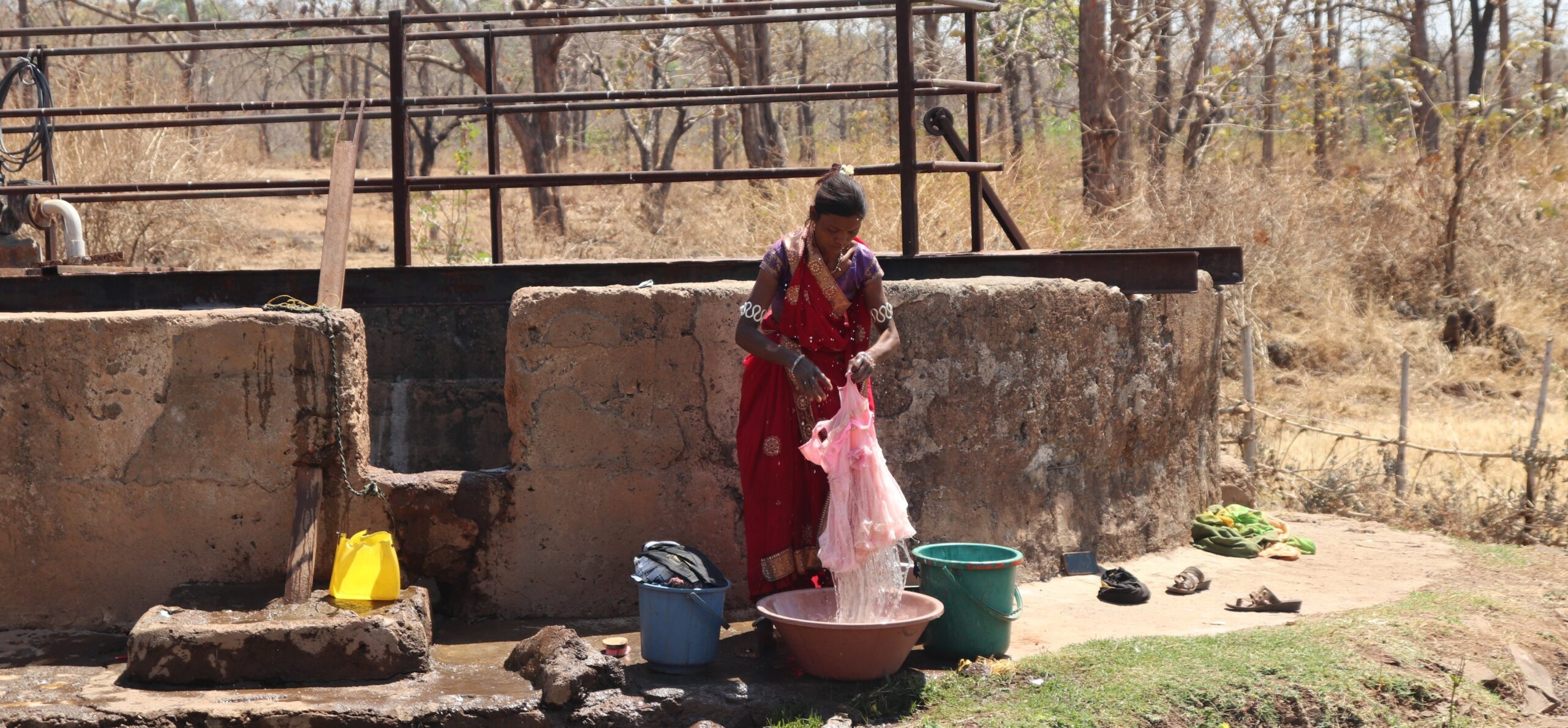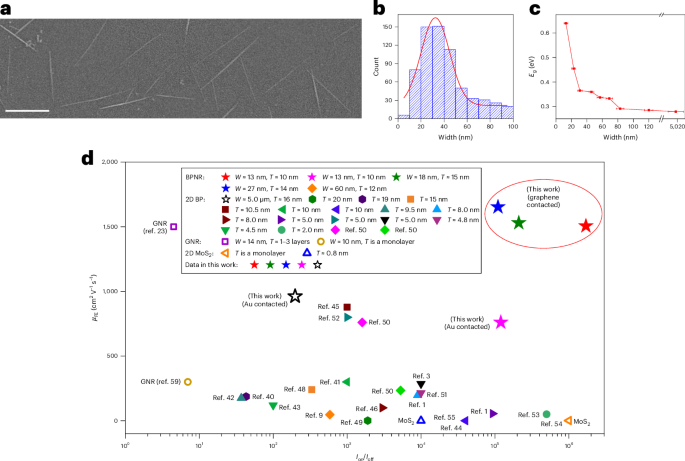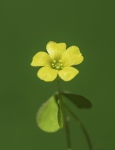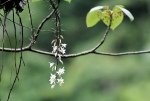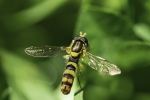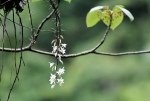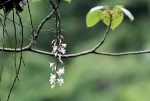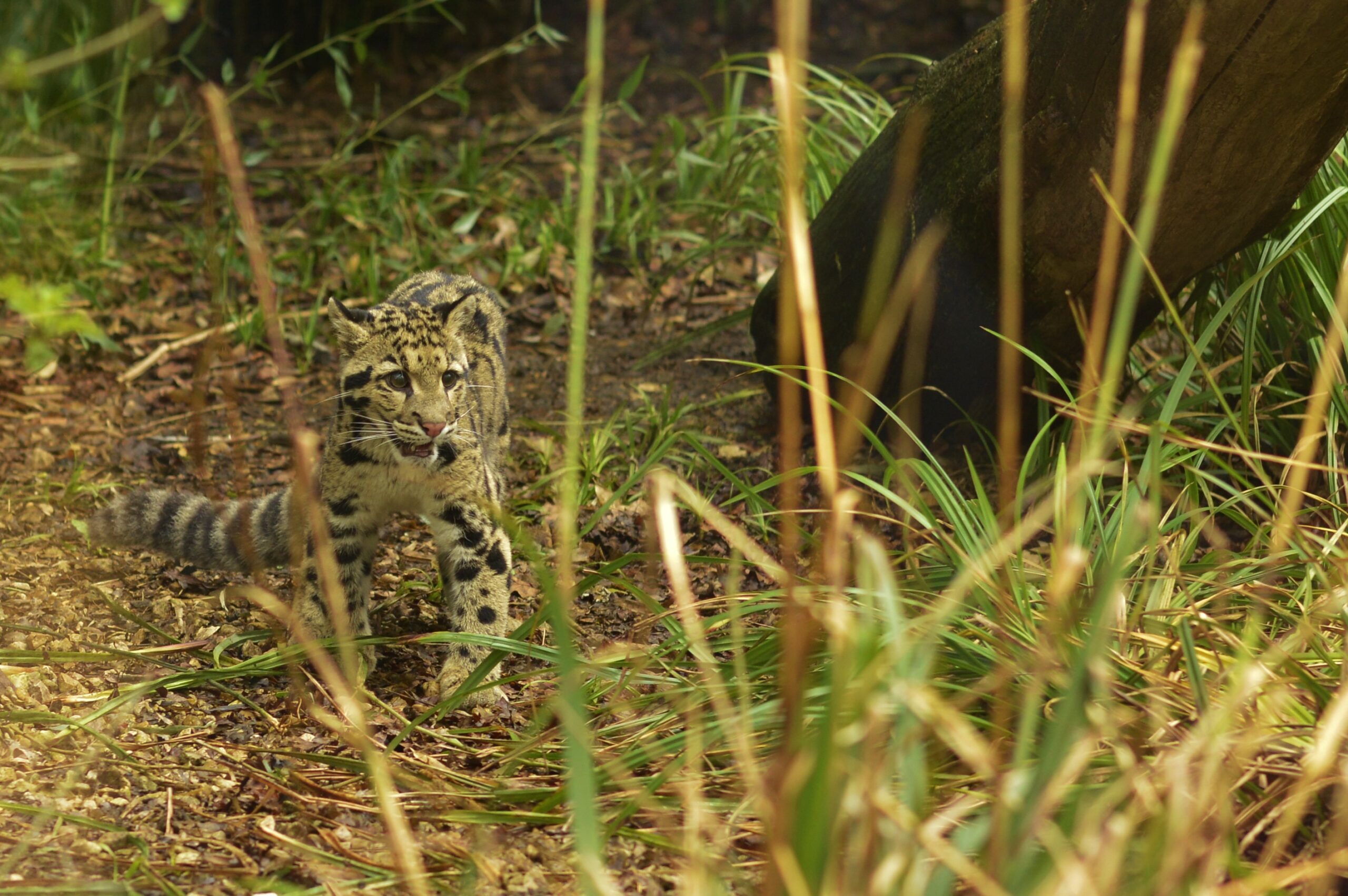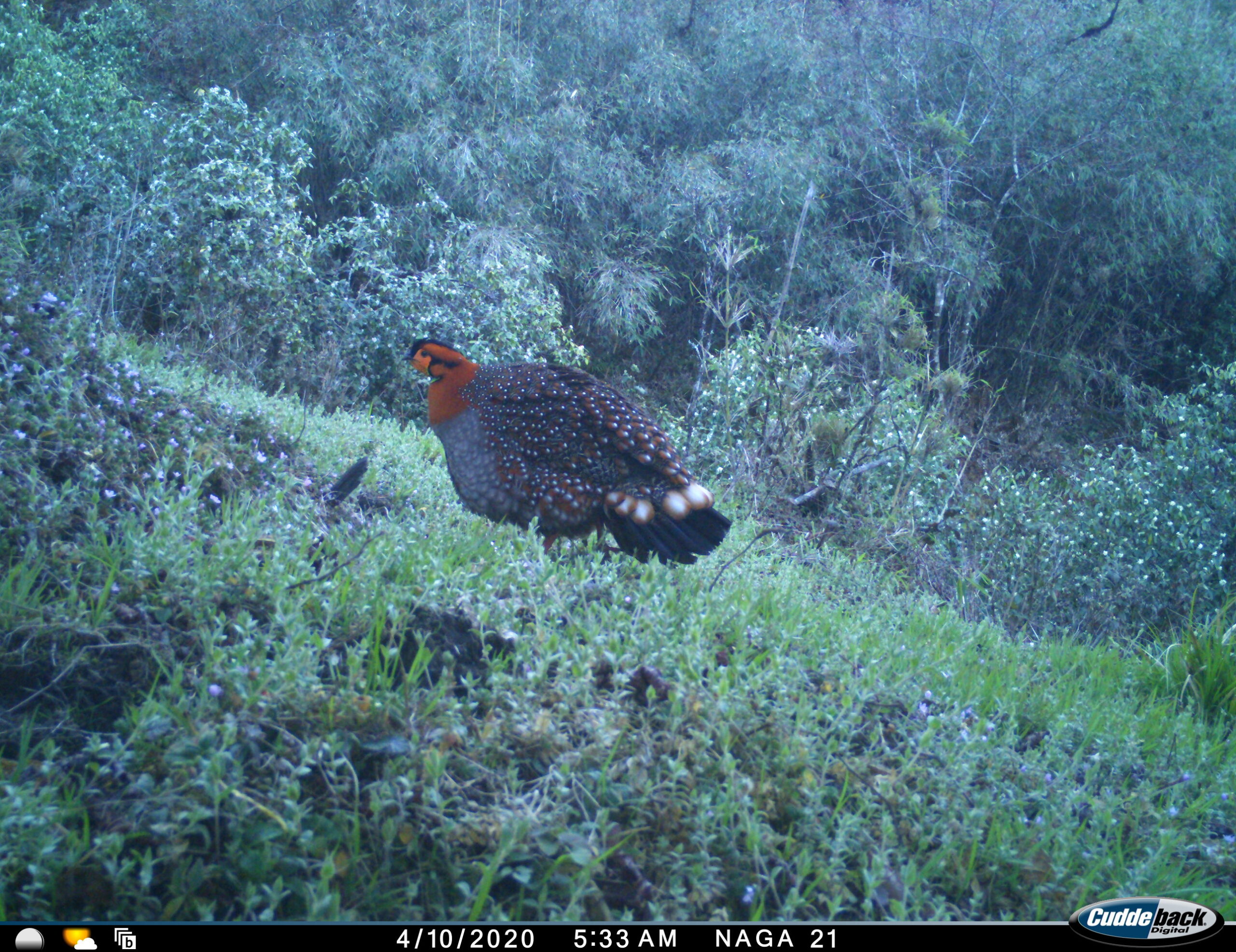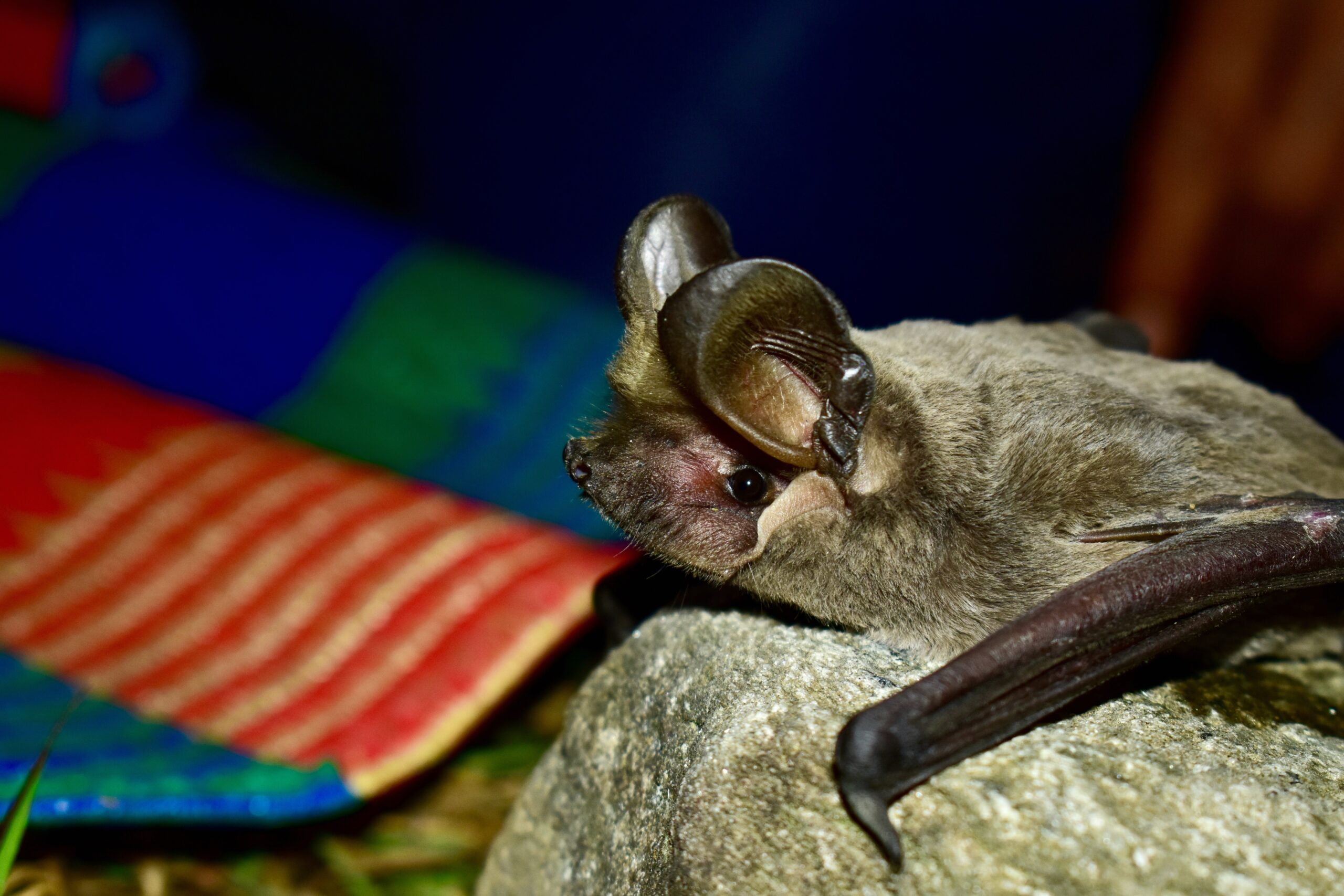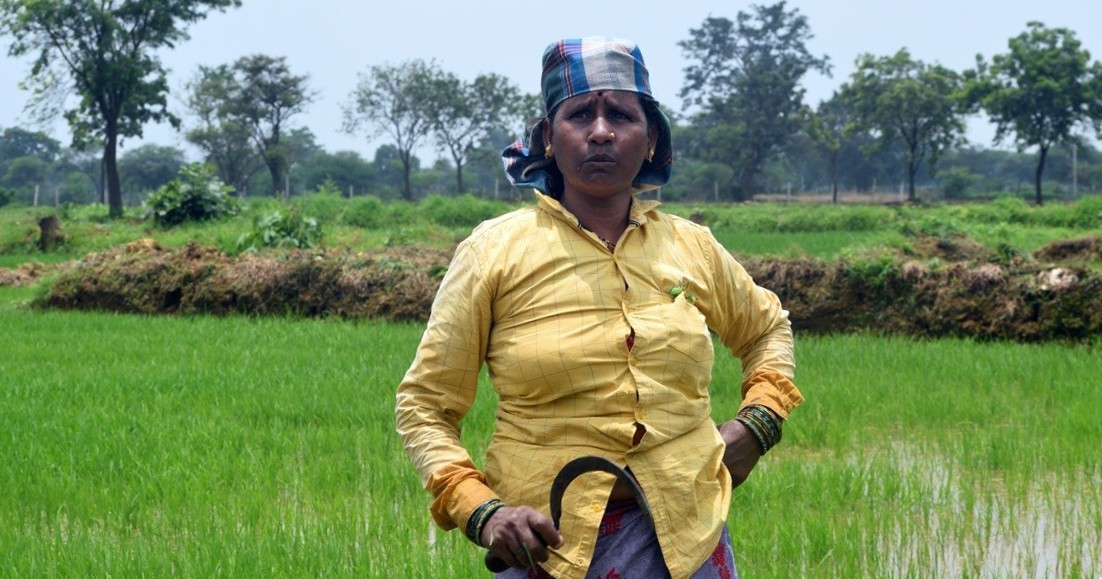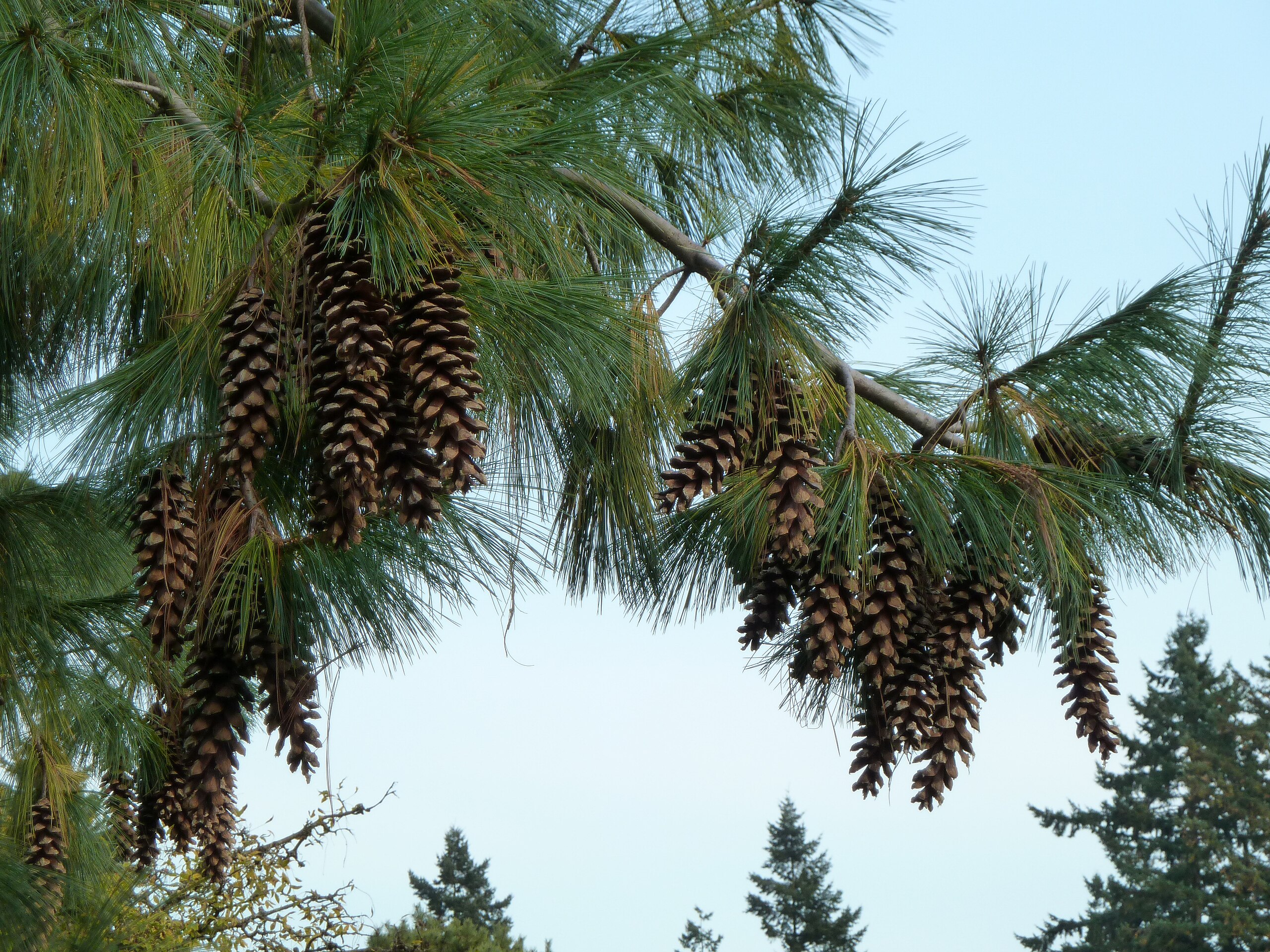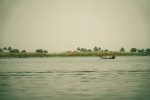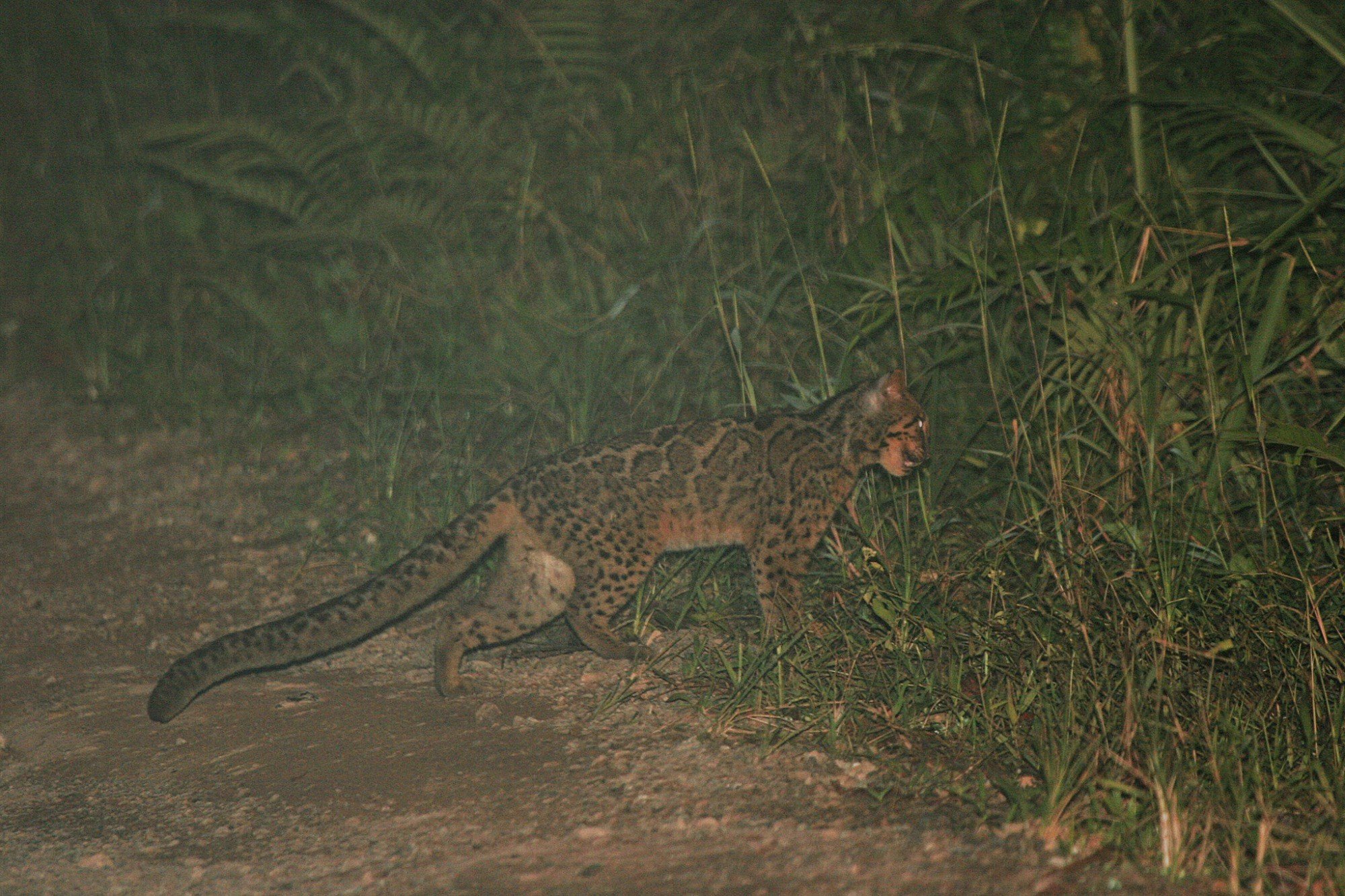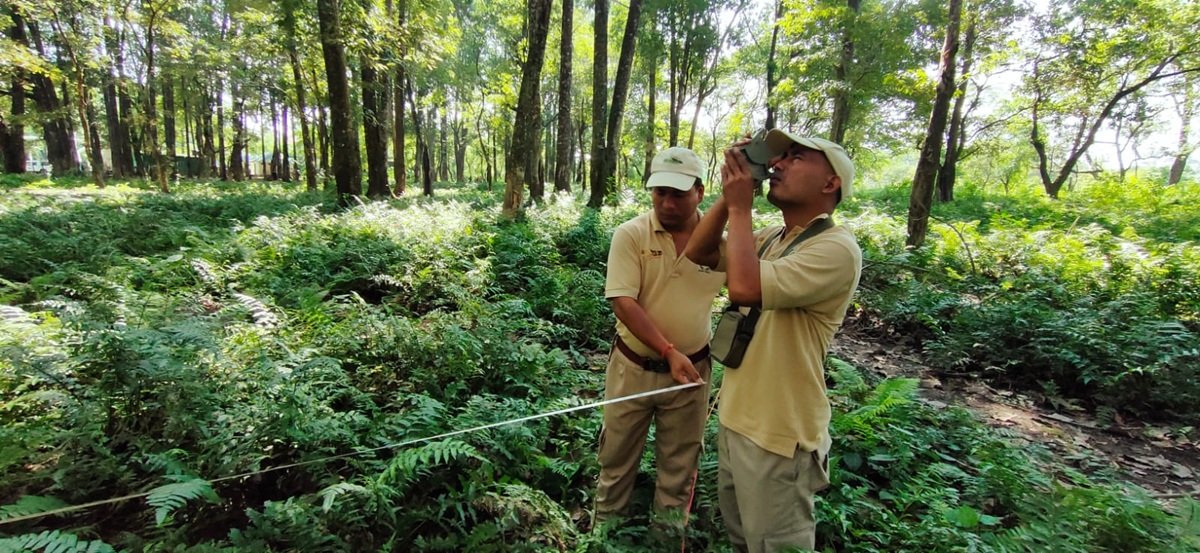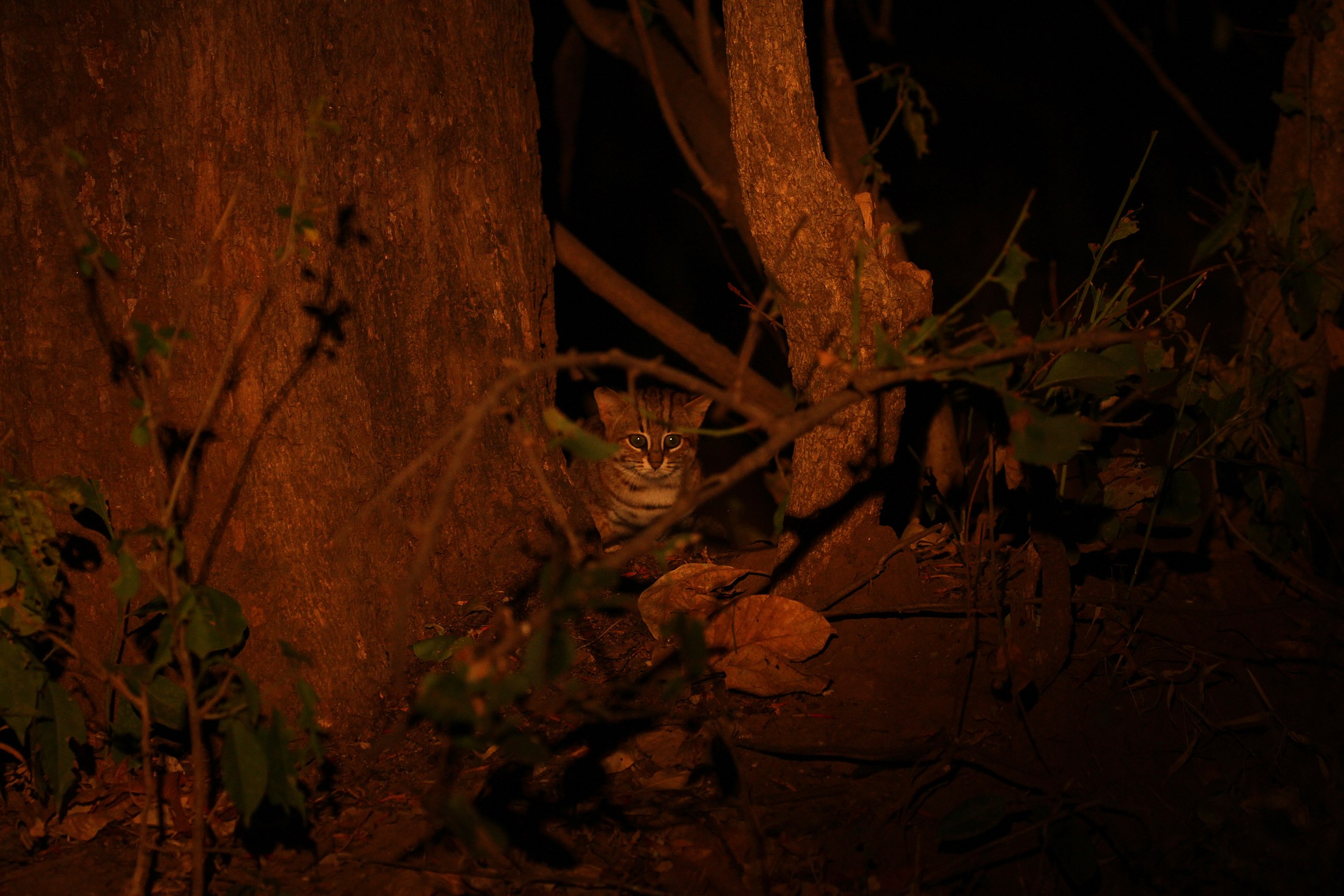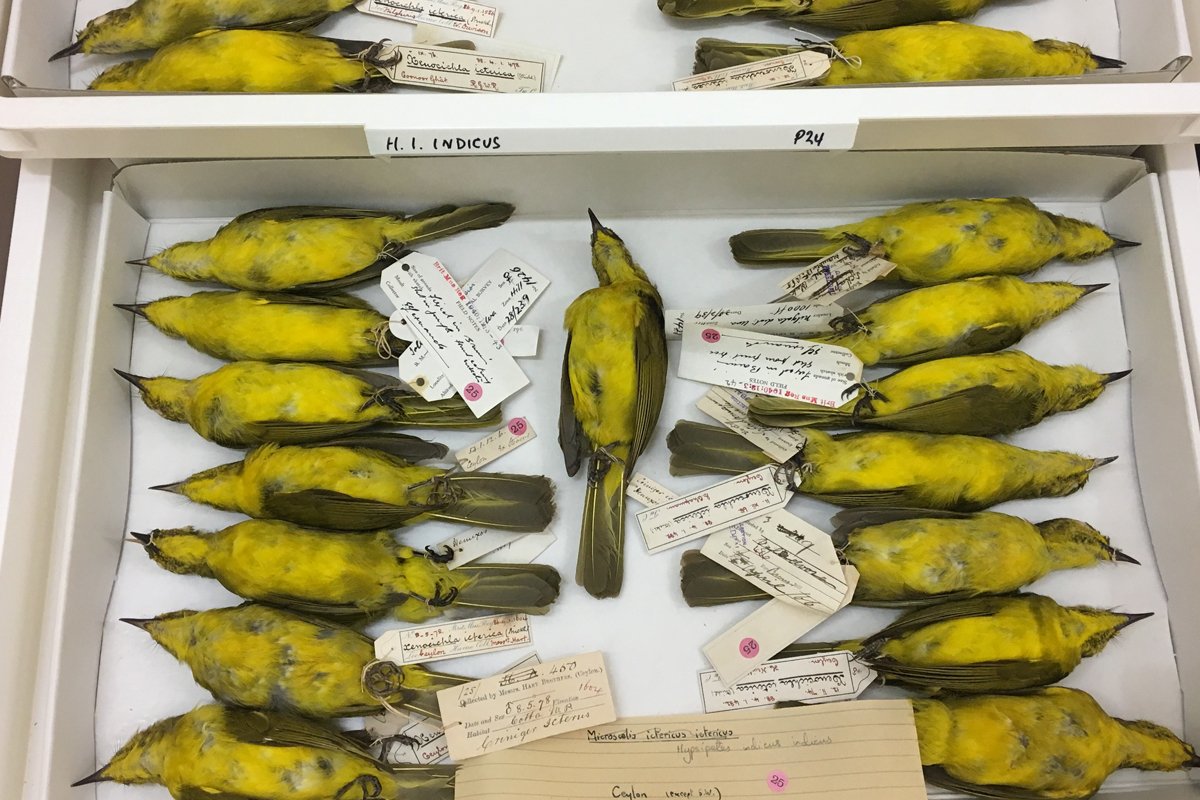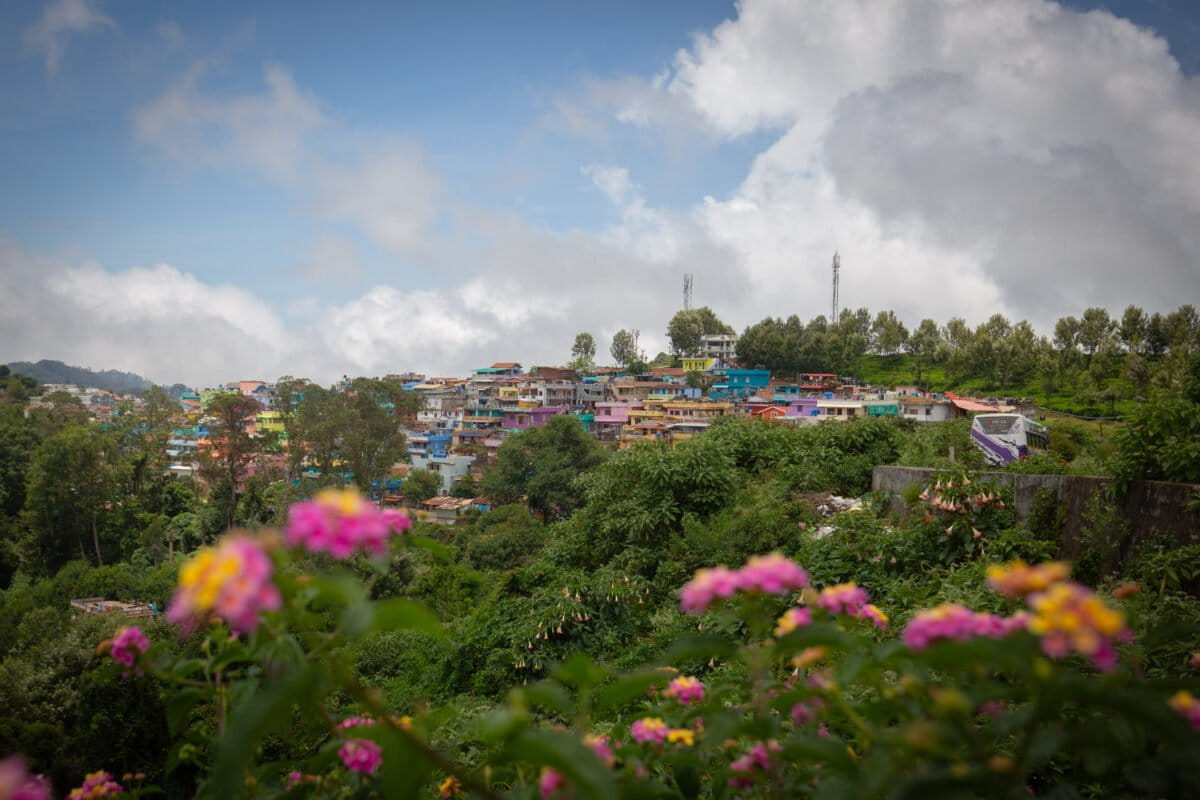

|
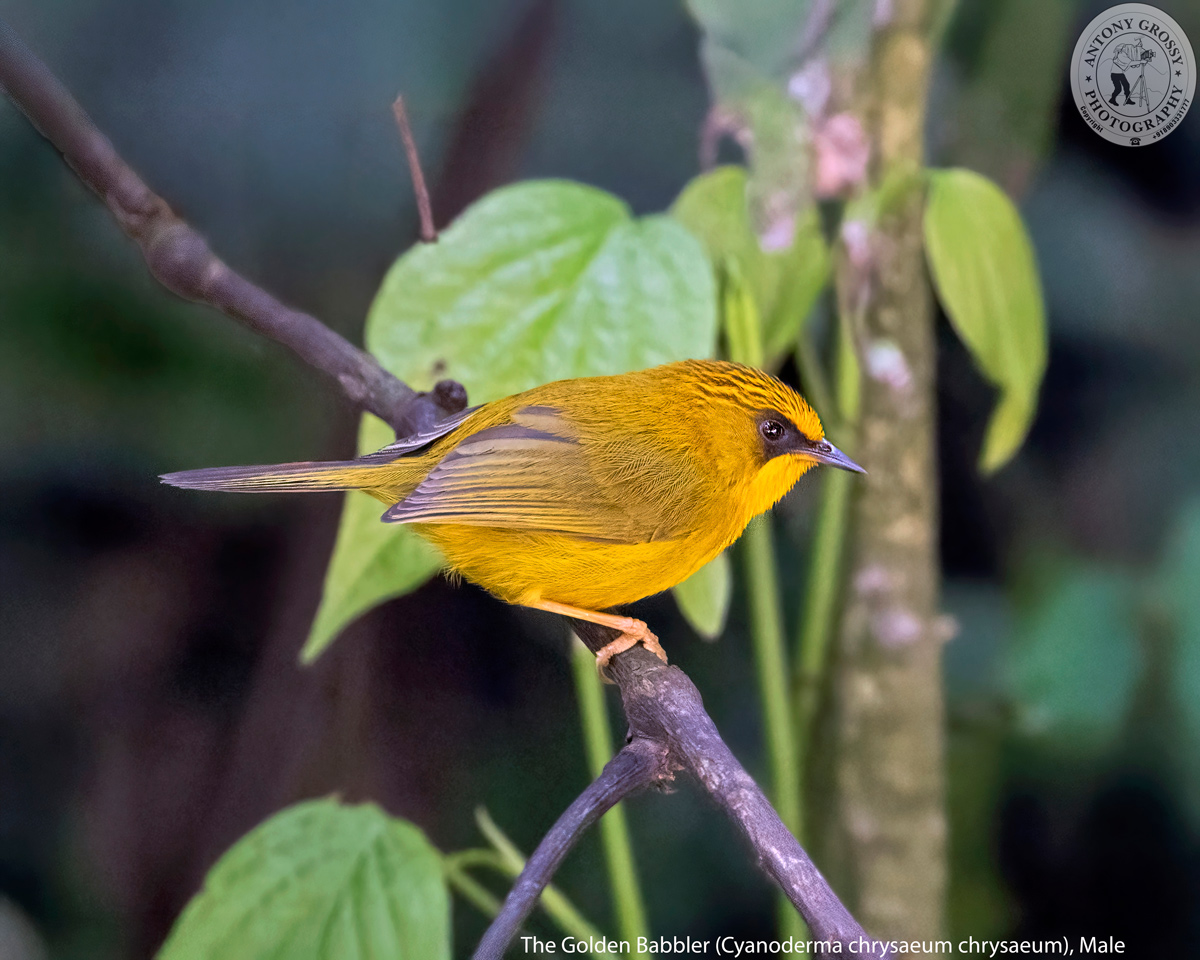 |
| Precious Gold Nugget of Hill Forests – The Golden Babbler, Male |
| The Golden Babbler is a plump, splendid Golden-Coloured, small babbler. Apart from a dark-streaked crown and small black mask, this bird is bright golden-yellow all over. Inhabits hilly and montane forests with dense undergrowth, as well as bushy secondary growth. Frequently joins mixed-species flocks. A fidgety and not easy Babbler species, that is always a nightmare to freeze for photographers. . . . . . . . . . . . . …. ………….. ……………….. .. …. …. ……….. … …. ……….. … …. ………… ………….. ………… ………… ….. ………. …………. …….. ……………. …… …. …. ……….. … …. ……….. .. ………… ….. ………. …………. …….. ……………. … The Golden Babbler is a chunky relatively small babbler measuring around 10 to 12 cm in length and weighing about 6 to 10 gms. A distinctive small babbler with narrowly striped crown, black half-mask and yellow underparts. Nominate race has crown and nape golden-yellow, narrowly and evenly streaked with black, with strong yellow preocular lateral crownstripe bordering black on lores and short black supercilium; upperparts yellowish-olive, upperwing and tail brownish-grey, flight-feathers with narrow yellow-buff fringes; short black submoustachial stripe from lores, plain yellowish-olive ear-coverts; chin to mid-belly bright yellow, shading on sides and below to olive-yellow; iris red or red-brown to brown or brown-grey; bill blackish, paler below, often with pinkish-red or pinkish-flesh base of lower mandible; legs pale yellowish-brown to light brown. Both Sexes are similar. The Juvenile is duller and browner above than adult, whiter below, with browner flanks. . . . . . . . . . . . . …. ………….. ……………….. .. …. …. ……….. … …. ……….. … …. ………… ………….. ………… ………… ….. ………. …………. …….. ……………. …… …. …. ……….. … …. ……….. .. ………… ….. ………. …………. …….. ……………. … The Golden Babbler occurs from the foothills of the Eastern Himalayas to South East Asia and inhabits subtropical lowland and montane forests. Found mostly in broadleaf evergreen forest, bamboo stands, also dense bushes, Rubus thickets, deserted cultivation and clearings; also secondary forest, pine forest and upper montane primary vegetation in Sumatra. Found at 300 to 2600 mtr in Indian Subcontinent. Resident, apparently with some seasonal wandering; in North East India described as occasional migrant. . . . . . . . . . . . . …. ………….. ……………….. .. …. …. ……….. … …. ……….. … …. ………… ………….. ………… ………… ….. ………. …………. …….. ……………. …… …. …. ……….. … …. ……….. .. ………… ….. ………. …………. …….. ……………. … The Golden Babbler feeds on insects, including ants, caterpillars; occasionally berries. Forages in lower to middle storeys. Outside breeding season (from Aug) found in mixed flocks with Old World warblers and other species of babbler, often The Grey Throated Babbler, or in family groups; sometimes in monospecific flocks. . . . . . . . . . . . . …. ………….. ……………….. .. …. …. ……….. … …. ……….. … …. ………… ………….. ………… ………… ….. ………. …………. …….. ……………. …… …. …. ……….. … …. ……….. .. ………… ….. ………. …………. …….. ……………. … Their Song is a rapid tu tu-tu-tu-tu-tu-tu or slower ti tu-tu-tu-tu-tu, or chink chink-chink-chink-chink-chink, usually with 5 to 10 notes and lasting 1 to 1·25 seconds; like that of The Rufous Fronted Babbler but notes tend to be clearer, often sounding more spaced, and usually with more obvious pause (occasionally no pause) after first note. Introductory notes sometimes given singly. When alarmed, utters scolding chrrrrr-rr-rr, chrirrrrr or chrrrrrr. . . . . . . . . . . . . . . . . . . . . . . . . . . . . . . . . . . . . . . . . . . . . . . . . . . . . …………………….. ………………………………………………………………… ………………………………………………………………………………………………………………………………………………………………………………………….. ………………………………. .. ……… …… … …. ……….. Description Credit Birds of the World (The Cornell Lab), Oiseaux, Birda, Animalia, Birds of India | Bird World, Bird Count India & Wiki. |
  |
|
|








